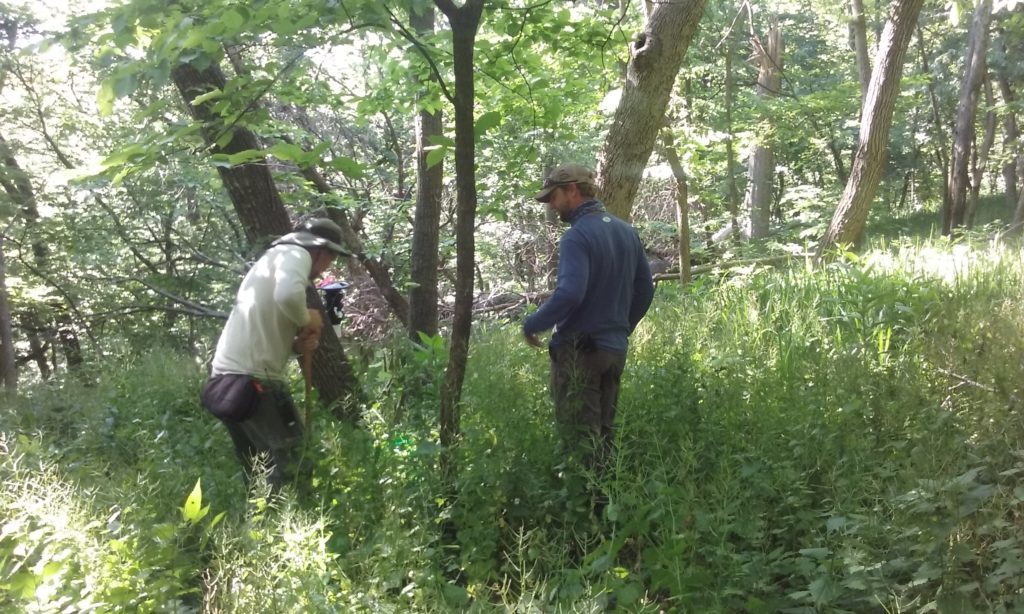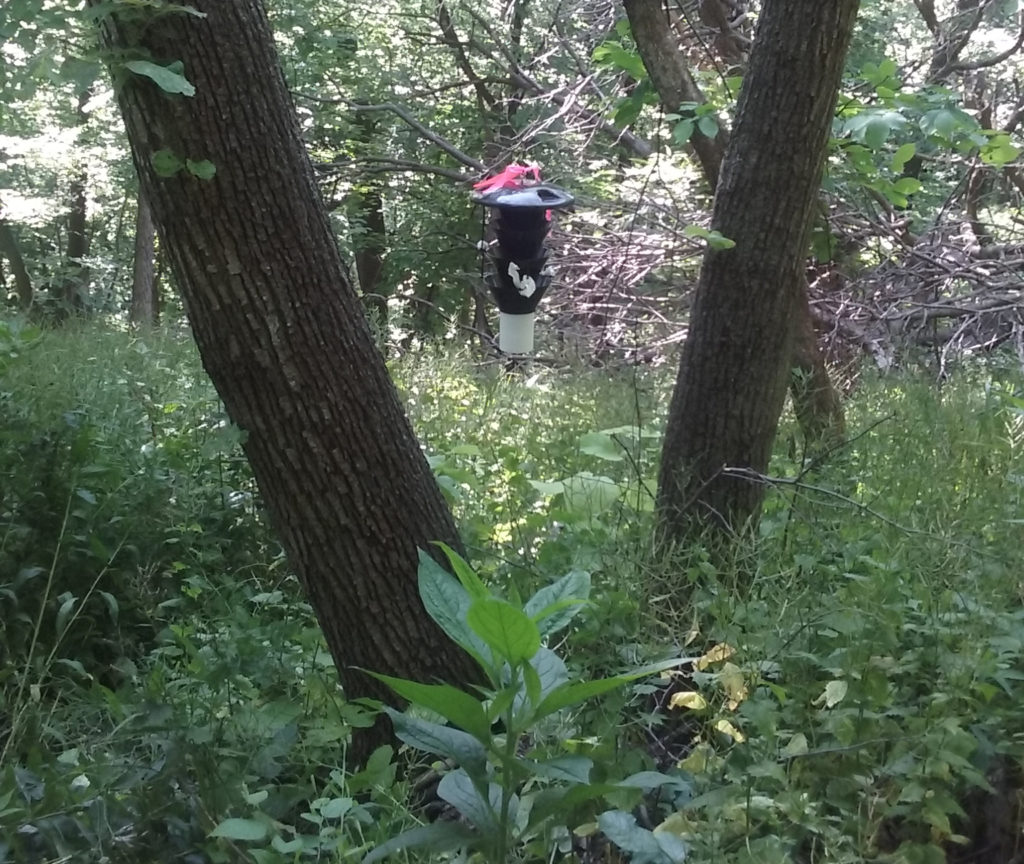Conservation Corner: Insect, Bird, and Plant Surveys Oh My!
Hello summer!
June was monitoring season here at Fontenelle Forest, where field experts delved into the landscape to survey insects, plants, and birds, building a baseline of information to build upon our existing knowledge. Our goal was to document the impacts of conducting restoration activities on our unique landscape. Last summer, we conducted bird and plant surveys, and this year, we’ve been able to add an insect survey. While it’s neat to see what we have, there is more to our monitoring than just each individual set of data. We are using these methods to track changes in our woodlands over time, based on specific oak woodland and savanna restoration techniques, such as prescribed fire and thinning, applied in different areas of the property. One theory I’m really excited about is the possibility that prescribed fire controls tick populations. Stay tuned, we are definitely testing that hypothesis!
Our avian point counts usually begin right around Memorial Day. Surveyors go to specific, random points throughout the forest and identify what they see and hear in a 50m radius within 5 minutes. Each of the three ornithologists conducts avian counts at between 35 and 48 different points. With a total of 133 points surveyed between Fontenelle Forest and Neale Woods. These surveys are done between 6am and 10am, and not in heavy rain or wind. Mosquitoes keep our surveyors company in the field, as sometimes the early mornings are tough. The data is then compiled in a spreadsheet, and over a few years, we hope to have enough data to detect changes in density and abundance of breeding bird populations over time. Data from our first year of point counts showed house wrens being the most abundant bird encountered in our survey parameters.

This year, our insect surveys started during the first week of June. A contract entomologist walked 100 meter lines, called transects, looking for and identifying insects as well as setting traps to catch them. There are six line transects at Fontenelle Forest and four at Neale Woods. With the help of volunteers, the entomologist will sort through insect samples, complete data sheets, and report back to us to let us know what is out there – besides mosquitoes. Since there are a multitude of nocturnal insects, some evening hours are required as well. These nighttime surveys are called black lighting. Two weeks of hard work, outdoors and indoors, will be summarized into a report for us. And, even though ticks aren’t insects, we are trying to track them as well, to see if our oak woodland restoration efforts reduce their numbers. Basically, we are conducting a baseline survey of insect life (diurnally and nocturnally) in various locations. This type of research project has never been done before at Fontenelle Forest or Neale Woods, so we are anxiously waiting to find out how many new species of insects were found and where.

The third type of monitoring and research project has to do with plants. A contract botanist identifies every plant found within a 1 meter square, set down at 5 meter intervals along a 100 meter transect. After all the plants were identified in the 1 meter square, she also estimates total ground cover of invasive garlic mustard and shrubs. And lastly, we also count the number of oak (red or bur) seedlings present in an expanded 2 meter square. The transects are spread over ten spots at Fontenelle Forest and six at Neale Woods, and are located in areas that receive a variety of management efforts. Staff members and volunteers assist with recording the data, which the mosquitoes appreciate. She then crunches the numbers and reports back.

Our monitoring efforts are a great way to document the effects of our different management techniques, across a variety of taxa. Thinning, fire and mowing in different combinations should change the composition of bird, insect and plant species/populations over time. We are super excited to document this snapshot in time, as well as observe and report the changes as we progress through our restoration efforts. These research projects are funded in their entirety by the Nebraska Environmental Trust.
Michelle Foss, Restoration Biologist


